
Poljot Introduction
Poljot the brand was started in 1964 by the First Moscow Watch Factory (sometimes abbreviated as FMWF) as its flagship for the USSR watch industry.
During its active years, the brand, along with other associated names such as Strela and Sturmanskie, made a name for Russian watchmaking mainly for their watches going to space. In 2004, when Poljot filed for bankruptcy in 2004, the brand names were bought out by companies such as MakTime and Volmax.
Today, Poljot’s legacy is carried by those brand names, as well as (spiritual successors) such as Poljot-International. The brands bought from the original Poljot now sell watches under Strela, Sturmanskie, Buran, and Aviator. The brand’s history however has become fairly challenging to piece together, as the various brands have their own accounts of their roots.
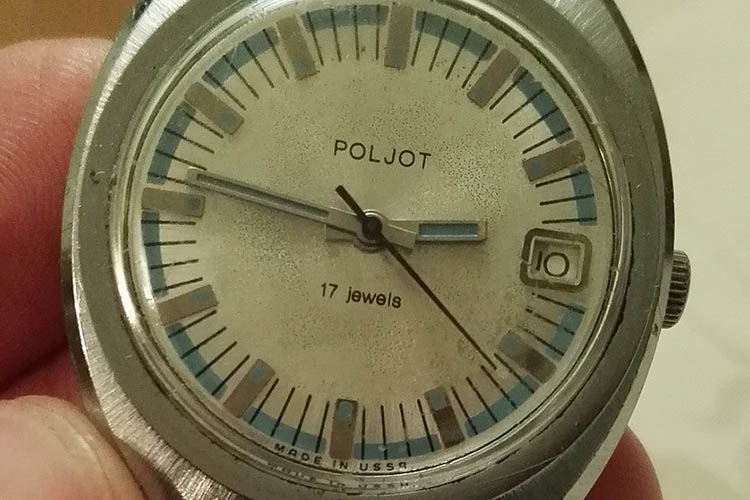
Poljot Brand History
The First Moscow Watch Factory started as the First State Watch Factory for the purpose of supplying the Red Army with watches without the need for importing parts. The FMWF adopted the Poljot brand name in 1964 in honor of Yuri Gagarin’s first space flight in 1961 when he wore a Sturmanskie watch manufactured by the FMWF.
During the time of Poljot, it was known for the caliber 3133 for chronographs, caliber 2612 alarm clock, the automatic caliber 2416, and the caliber 2614. The caliber 3133 was arguably the most well-known, being cased in the very recognizable and iconic Strela Chronograph, which itself is known for being worn by Alexei Leonov in 1965 during the first spacewalk.
Equally as iconic is the caliber 2609, which was cased in the Poljot (then FMWF) Sturmanskie that Yuri Gagarin wore, being one of the first watches in space.
In the 2000s, however, Poljot filed for bankruptcy, which resulted in the Poljot name ending under the ownership of businessman Sergei Pugachev, and with their brand names being splintered off into different watch companies.
The First Moscow Watch Factory, however, was bought by former employees, who had then formed Volmax, under which the brands Sturmanskie, Buran, and Aviator were established. Strela, on the other hand, ended up manufactured by the Russian firm MakTime.
Today, the Sturmanskie, Buran, Aviator, and Strela brands live on, albeit with different fates. Sturmanskie is still based in Russia, while Strela is now based in Germany, and both Aviator and Buran are now based in Switzerland.
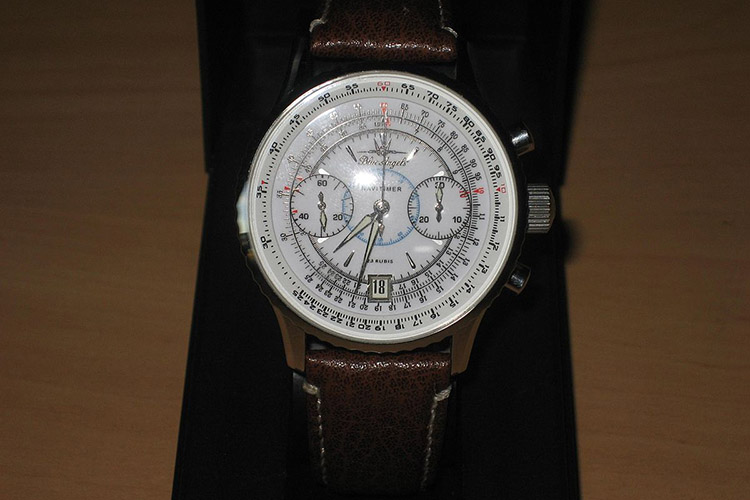
Poljot (Sturmanskie, Buran, Aviator, Strela) Watch Collections
The original Poljot may no longer be making watches but it lives on through the brands that resulted from its bankruptcy: Sturmanskie, Strela, Buran, and Aviator.
Poljot Brands
Sturmanskie

The flagship of Sturmanskie is the Sturmanskie Gagarin “The First”. This iteration is the most faithful recreation of the original Yuri Gagarin space watch in Sturmanskie’s selection.
The watch comes in a choice of stainless steel or rose gold-plated 33mm steel case with brushed sides (the same size as the original watch Yuri Gagarin wore) with mineral crystal and 5ATM water resistance. Both also come with a choice of either an Ivory or a Black dial.

The long seconds hand is painted red, and the pencil hour and minute hands are black. The Arabic numerals and the hour and minute hands have cream-colored Super-LumiNova lume. The sizable crown complements the pilot style of the watch.
The watch is powered by a manual-winding Poljot caliber 2609 movement with a 40-hour power reserve. Lastly, this reference comes with a leather strap and a signed buckle.
Alternatively, Sturmanskie also offers the Gagarin Classic 33, a simpler, Portugieser-esque version of the watch with a more clinical black or silver/grey dial. This option is a more dressy and understated alternative to the original design which has more military sensibilities.
Strela
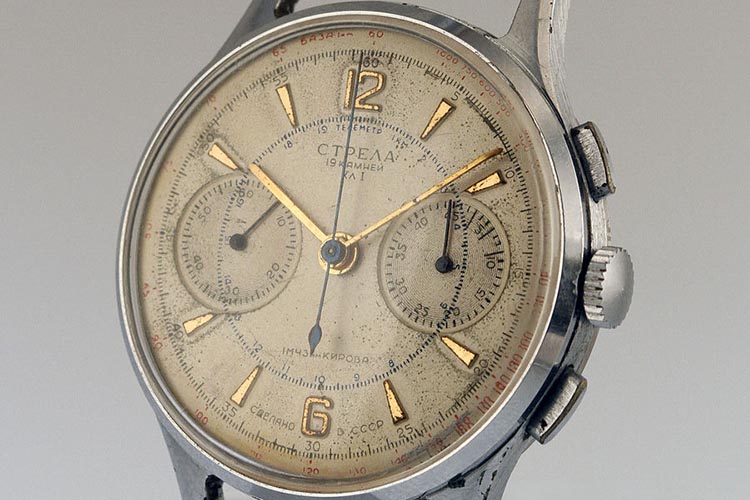
Similarly to Sturmanskie, Strela stays true to its Russian roots, best exemplified by the Strela Cosmos CO38CYB, a reissue or spiritual successor of the Caliber 3017 Strela chronographs, the Strela Sekonda black dial chronograph in particular.
The case is very much similar to the original, but with a 1mm bulk up at 38mm. It also has a brushed finishing on the sides and polished finishing for the bezel and tops of the lugs. The unsigned crown is polished with a good size providing substantial grip. The start and stop chronograph buttons are baguette-shaped with framing. One thing to note is the thickness of the watch at 15mm, which is on the thicker side.
The dial is faithful to one of the original dial variations. It has an outer tachymeter track and an inner telemeter track. The two subdials cover running seconds and a 30 minute counter. The hands are the very recognizable Strela chronograph hands, with lume on the hours, minutes, and subdial hands.
Lume is also present for the stick indexes, subdial numerals, and Strela logo, which makes for a very readable watch in the dark when the lume is activated. While lit, however, the lumed features of the watch are a minty green color, which contrasts well with the black dial of the watch.
The watch is powered by the manual winding, 23-jewel Poljot 3133 Maktime movement, a reissue of the older Poljot 3133 movement, which was itself a successor of the original caliber 3017. The original Poljot 3133 shares many identical parts with the Valjoux 7734, due to Valjoux selling their old machinery to the USSR.
Compared to the Valjoux 7734, caliber 3133 has its chronograph gears running with jewels, it has a shock protection system in place for the Glucydur balance, and the balance size was reduced to raise the beat rate.
It features a 21,600bph beat rate, the chronograph complication with a 30-minute counter, and a date at either between the 4 and 5 indices or at the 6 o’clock position depending on the release. With the chronograph activated, the power reserve clocks in at 37 hours, while with the chronograph inactive, the power reserve boosts up to 42 hours.
Finally, the watch comes with a 19mm leather strap.
Buran

As opposed to the other brands, Buran does not seem to have its own independent website for its brand. They do however have watches on established websites such as poljot24.de, or poljotuhren.de.
That said, and staying faithful to Russian designs, the Buran 1259A Chronograph is a very good choice.
The watch shares a very similar look with the Strela Cosmos CO38CYB, except instead of hints of green and red, the Buran has mainly white details with hints of red. Further, unlike the Strela, it also has a third subdial at the 6 o’clock position in the form of a 24-hour indicator.
The date window for the Buran is only in between the 4 and 5 o’clock indexes. The lume on the Buran is kept mainly on the indexes, and the hour, minute, and chronograph hand. Unfortunately, it is not very clear if the subdial hands and the logo are also luminous.
The main difference between the Strela Cosmos and the Buran 1259A is the movement. The Strela utilizes the Poljot Maktime 3133, while the Buran utilizes the Poljot MakTime 31681. The Poljot Maktime 31681 has 25 jewels (versus the 23-jewel 3133), is a cam-controlled, coulisse lever system movement, and beats at 21,800 bph. The main difference is the addition of the 24-hour indicator complication.
Lastly, the watch comes in a signed Buran leather strap, with a signed buckle as well.
Aviator
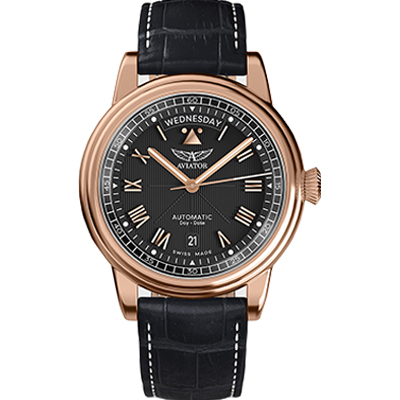
The most accessible watch in Aviator’s catalog in terms of size and complications is the Douglas Day-Date 41. The watch was inspired by the 1935 American Douglas DC-3 transport aircraft.
As the name implies, the watch comes in a 100M water-resistant 41mm polished stainless steel case, with a PVD gold option. The case features rounded steps, which would aid in fitting under cuffs. The dial features pencil hands with Superluminova, the full-word day at 12, and the date at 6. It has a textured surface, with applied Roman numerals, indexes also with SuperLuminova and elevated text.
Further, the reference has three dial color options for the stainless steel (black, green and blue), and four for the PVD gold (the same colors, plus brown). Interestingly, the Aviator logo appears above everything, being printed on the sapphire crystal.
The crown is signed with the Aviator “A”, and is a smaller, sharper, and more conical spin on the onion crown, while still remaining sizable in relation to the case. The lugs are simple but curve onto the wrist which helps provide a better fit of the watch on the wrist.
The movement for the watch is an automatic Swiss caliber AV-1000 based on the Sellita SW240-1, which features a 28,800bph beat rate, a day-date complication, and a 41-hour power reserve. This can be seen through a display caseback which is secured by four screws. The caseback also features the Aviator logo in the crystal. For the PVD gold options, the rotor is also in PVD gold.
The watch comes with a 20mm Aviator-branded leather strap that matches the dial color of your choice, and a deployant buckle.
Poljot Brand Reputation
As narrated in its history, Poljot, or the First Moscow Watch Factory, is well known for its watches going to space, as well as being robust, reliable, and accurate.
Today, the Poljot brand sensibilities live on through the companies that still reissue the original watches, albeit with modern, but minimal tweaks to the designs and movements. The most recognizable brands that resulted from Poljot’s bankruptcy are Maktime Strela and Volmax Sturmanskie, since both those brands still manufacture watches that are faithful or at least very close to the originals. Buran and Aviator, since moving to Switzerland have adopted their own design languages and branding which are very distant from their original Russian roots.
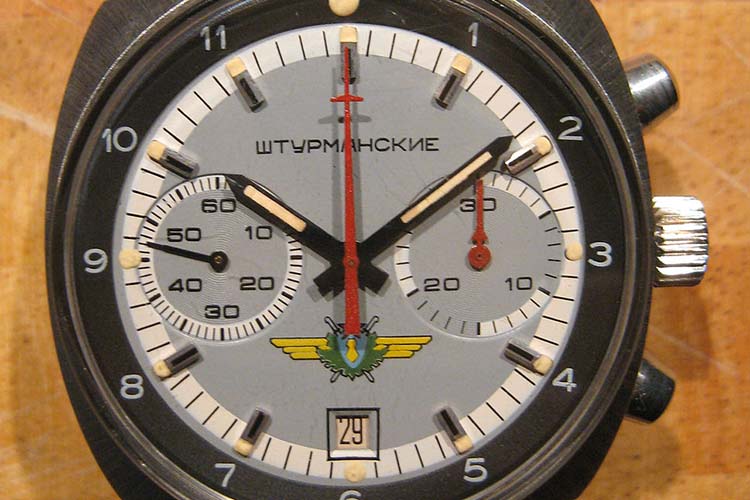
Are Sturmanskie, Strela, Aviator, and Buran good brands?
This would depend on a number of factors including your wrist size, your budget, and your preferences, and your ability to source and choose the watches from the brands’ collections.
When searching for Poljot watches, you are most likely looking for watches that resemble the originals or at least share their design sensibilities.
To get them out of the way, the design language and marketing of Buran and Aviator have deviated from their roots in Russian watchmaking, as they are both now marketed as and known for being Swiss brands.
True to the name, the designs by Aviator have more British/American pilot watch influence, with their more utilitarian and practical designs (save for the gold options). The dials are very easy to read, and the designers seem to have made sure to avoid any superfluous features, which makes for honest watches.
Some contentious points however would have to be the large sizes of their selection, with 41mm being the smallest diameter offered (save for the Douglas Moonflight which comes in at 36mm but seems to be designed to be marketed more towards women), and the brand does not offer any mechanical chronographs.
Buran, on the other hand, seems to have a bigger pool of influences that may detract from its brand recall. The collections have a mix of pilot watch designs, elegant dress watch designs, and sports designs. At a glance, they may be mistaken as a smaller Swiss brand, but the watches themselves remain solid despite the identity issues the brand may be facing.
Now on to Strela and Sturmanskie, the two companies are more likely to be more well known, as they have kept on a defined path, and have a clear vision of how they want to market themselves. While both brands have reissued the watches that put them on the map, both have been able to grow their brands with those foundations set with their roots. The brands provide wide selections that cater to both those who are looking for classic designs and those who want more modern releases that stay true to the Russian design language.
Ultimately, the four brands that resulted from the bankruptcy of the original Poljot all have diverse, and quality watches. However, when planning to purchase, you must sufficiently determine the type of watch you are going for, and whether heritage is a deciding factor.
The short of it is that Sturmanskie remains in Russia, and Strela which is now based in Germany, both remain true to their Russian roots, while Aviator and Buran have gone the route of Swiss watches.
Warranties
Sturmanskie
All watches have a 12-month warranty effective from the date of purchase.
Strela
Strela watches are warranted for a period of 24 months from the date of purchase. The international warranty covers material and manufacturing defects existing at the time of the purchase of the watch.
Buran
Poljot24.de warrants the watches purchased from their site for a full 2 years.
Aviator
Aviator watches are warranted for a period of 24 months from the date of purchase of the watch and covers the material and manufacturing defects existing at the time of purchasing the watch.
